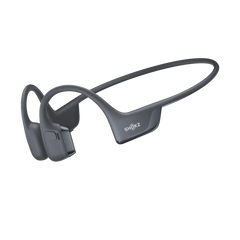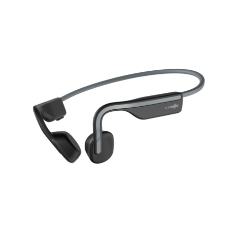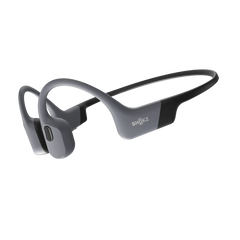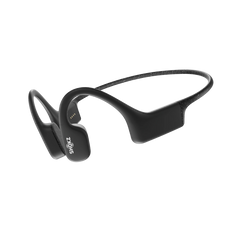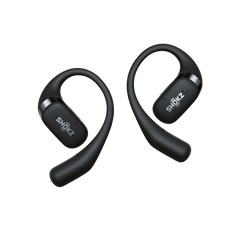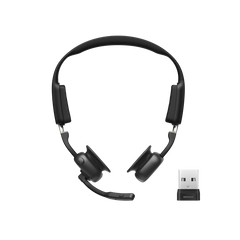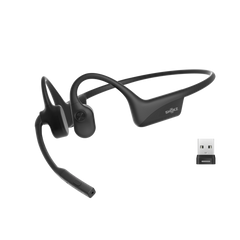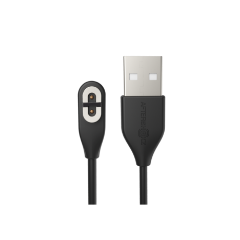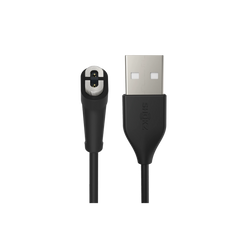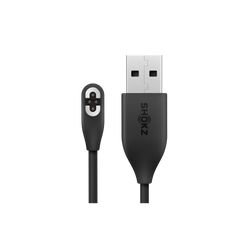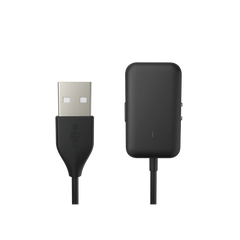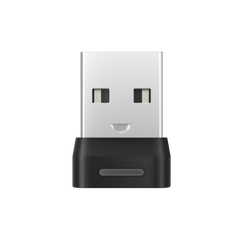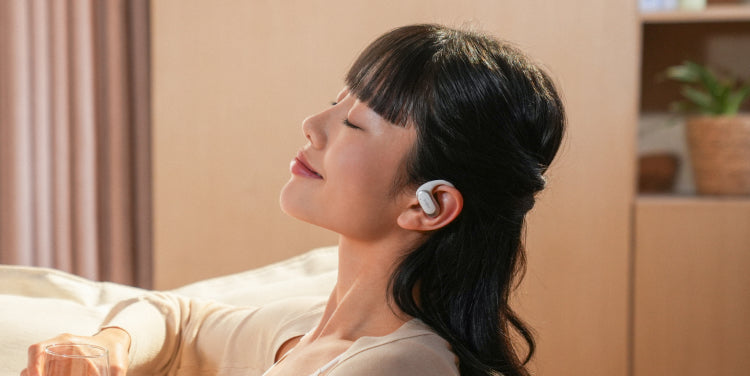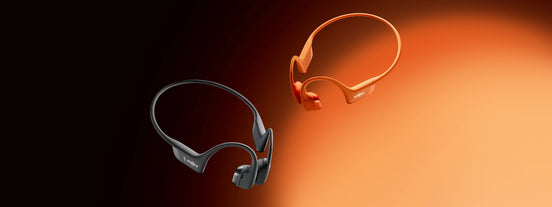Ear pressure can be a nuisance; for some, it's an ongoing problem that disrupts daily life. Whether you're listening to music with headphones, travelling by air, or dealing with allergies, the pressure in your ears can range from mildly irritating to downright painful.
Thankfully, there are ways to relieve this discomfort and even prevent it from happening in the future. For example, open-ear headphones are designed to reduce the discomfort often caused by traditional headphones, offering a pain-free, comfortable listening experience.
In this article, we will dive deep into the causes of ear pressure, explore simple methods to relieve it, and provide a science-backed solution for people who are struggling with this condition.
Let's start by understanding why pressure in the ear occurs and how to manage it effectively.
Why Do You Experience Pressure in the Ear? The Hidden Causes
The Most Common Medical Reasons
Several factors can cause pressure in the ear, from everyday habits to underlying health conditions.
Sinus Infections, Allergies, and Colds
When you suffer from sinus infections, allergies, or a cold, your nasal passages and sinuses become blocked. This condition can also affect the eustachian tube, the passageway that connects your middle ear to the back of your throat.
When the eustachian tube is blocked, it prevents air from properly entering the ear, which causes a feeling of fullness or pressure.
Eustachian Tube Dysfunction
Some people are more prone to ear pressure because their Eustachian tube doesn't function properly. This dysfunction can cause a sensation of stuffiness, discomfort, and, in some cases, pain in the ear.
Air Pressure Changes
Flying, diving, or even driving in the mountains can cause rapid changes in air pressure, leading to pressure in the ear. This is particularly true when you're ascending or descending quickly, as your body struggles to adjust to the changes in pressure.
For most people, this pressure is temporary and disappears once the body acclimates, but for some, it can linger.
Everyday Habits That Might Be Making It Worse
Lying Down, Bending Over, or Swallowing
Certain movements, like lying down, bending over, or swallowing, can trigger or worsen ear discomfort. These actions can affect the flow of air through the Eustachian tube, leading to discomfort.
Loud Noises and Headphone Use
Excessive exposure to loud sounds, especially through headphones, can contribute to ear discomfort.
If your headphones put pressure directly on your ear canal or use them for prolonged periods at high volumes, you may experience ear pain from extended headphone usage.
Stress and Tension
Stress and tension can cause muscle tightness in the jaw and neck area. This tension affects the muscles around the eustachian tube, preventing them from functioning optimally and causing discomfort.
Can Ear Pressure Lead to More Serious Problems?
While ear pressure is often temporary, it can sometimes lead to more serious health problems. If left untreated, persistent discomfort can sometimes lead to hearing loss.
This constant pressure can also trigger headaches, as the ear is closely linked to the head and neck muscles.
If you experience symptoms such as severe pain, dizziness, or fluid drainage, it's important to seek medical attention. These signs could indicate an ear infection or other serious issue requiring prompt treatment.
How to Relieve Pressure in Ear – Proven Methods That Work
Quick Home Remedies for Instant Relief
The Valsalva Maneuver
One of the easiest ways to equalise the pressure in your ears is the Valsalva Maneuver. Pinch your nostrils shut, close your mouth, and gently exhale as if you are blowing your nose. This practice will force air into the Eustachian tube and help balance the pressure.
Yawning, Chewing Gum, and Swallowing
These simple actions help open the Eustachian tube. They allow the air to flow into the middle ear.
If you're dealing with ear pressure, try yawning, chewing gum, or swallowing regularly.
Steam Therapy and Warm Compresses
Inhaling steam from a hot shower or a bowl of hot water can help loosen congestion and open the Eustachian tube. A warm compress over your ear can also reduce discomfort.
Medical Solutions for Persistent Ear Pressure
If persistent ear discomfort doesn't resolve with home remedies, medical solutions may be necessary.
Decongestants and Antihistamines
If your ear pressure is caused by allergies or sinus congestion, using decongestants or antihistamines can help reduce swelling and open the nasal passages. These decongestants also help in easing the pressure on your ears.
Earwax Removal Techniques
Blocked earwax can also cause it. If you suspect a blockage, you can safely remove earwax using over-the-counter ear drops or seek assistance from a healthcare professional.
Surgery and Professional Treatments:
In rare cases, it might require surgery, especially if it's caused by chronic Eustachian tube dysfunction or severe infections. Your healthcare provider can guide you in these instances.
How to Prevent Ear Pressure Before It Starts
Hydration and Diet Tips
Staying hydrated helps keep your sinuses clear, which can prevent this condition. A healthy diet rich in vitamins and minerals can also support your overall ear health.
Ear Protection During Flights and Diving
When flying or diving, protect your ears by using earplugs or practising the Valsalva Maneuver. These methods can help your ears adjust to pressure changes.
Managing Allergies and Sinus Health:
If you suffer from allergies or sinus problems, controlling these conditions with the right treatment will reduce the likelihood of developing ear discomfort.
Are Your Headphones Causing Ear Pressure? A Better Alternative
How Traditional Headphones Can Worsen Ear Discomfort
Traditional headphones, especially in-ear models, can contribute to ear discomfort. They press against the ear canal or sit inside it, which increases the pressure and restricts the airflow. Prolonged use can cause ear pain and even lead to ear pain.
Why Open-Ear Headphones Are the Best Choice for Ear Pressure Relief
Open-ear headphones offer a solution to the discomfort caused by traditional headphones. These headphones rest outside your ear. They allow for better airflow and eliminate the direct pressure on the ear canal. This open-ear design significantly provides a more comfortable listening experience for long periods.
These headphones also allow you to remain aware of your surroundings. This feature makes them a safe choice for athletes for outdoor activities like running or cycling.
How to Choose the Right Open-Ear Headphones for Maximum Comfort
When choosing these headphones, look for comfort and high-quality sound options. Ensure they provide better ear ventilation and are designed to prevent pressure buildup.
The Shokz OpenFit and OpenFit Air are great options, as they are specifically designed for comfort, with high-quality sound and minimal ear discomfort.

OpenFit and OpenFit Air: The Best Open-Ear Headphones by Shokz
Shokz OpenFit Air
The Shokz OpenFit Air offers an unparalleled listening experience with Shokz DirectPitch™ technology. These air-conduction headphones provide outstanding sound clarity while ensuring a comfortable, lightweight fit. These features make them ideal for workouts and daily activities.
Built to be durable and specifically designed for extended use, the OpenFit Air is perfect for those who need a reliable, high-performance audio solution without sacrificing comfort.
Shokz OpenFit
The Shokz OpenFit headphones blend style, comfort, and cutting-edge audio technology. Perfect for everyday use, they deliver a seamless audio experience while keeping you aware of your surroundings.
Whether you're commuting, exercising, or working, the OpenFit delivers superior sound quality for music and calls. Its ergonomic design ensures maximum comfort, so you can listen without discomfort throughout the day.
Say Goodbye to Ear Pressure with Open Ear Headphones
Switching to open-ear headphones can make a difference if you're struggling with pressure in your ear. These headphones provide a comfortable, safe, and enjoyable listening experience without the discomfort and pain of traditional designs.
Ready to Relieve Ear Pressure and Enjoy Comfortable Listening?
Upgrade to Open-Ear Headphones for Better Comfort, Ear Health, and Pain-Free Listening
Try the OpenFit Air or OpenFit by Shokz today and experience a better, pain-free listening experience.
FAQs: Relieving Ear Pressure and Finding Comfort
Q1: Can wearing headphones cause ear pressure?
Yes, wearing headphones, especially traditional over-ear or in-ear models, can cause ear pressure. The tight fit of over-ear headphones can create pressure around the ears and cause discomfort. This pressure is exacerbated by prolonged use and lack of airflow.
Q2: How can I relieve pressure in my ear from headphones?
Consider switching to open-ear headphones to relieve ear pressure. They don't press directly on your ears or seal the ear canal. You can also take regular breaks, practice the Valsalva Maneuver, and stay hydrated to help reduce discomfort. If the pressure persists, using warm compresses or seeing a doctor for earwax removal might help.
Q3: Are open-ear headphones good for ear pain?
Yes, they are an excellent choice for those experiencing ear pain from extended headphones. Since they rest outside the ear, they prevent pressure buildup and allow for better ventilation. These headphones reduce the discomfort that traditional headphones may cause.
Q4: How do I prevent ear pressure when using headphones for long periods?
To prevent ear pressure, avoid prolonged use of traditional headphones. Switch to open-ear headphones for a more comfortable listening experience. Also, follow the 60/60 rule, keeping the volume at 60% for no more than 60 minutes. Regularly clean your headphones and adjust them for a better fit to reduce discomfort.
